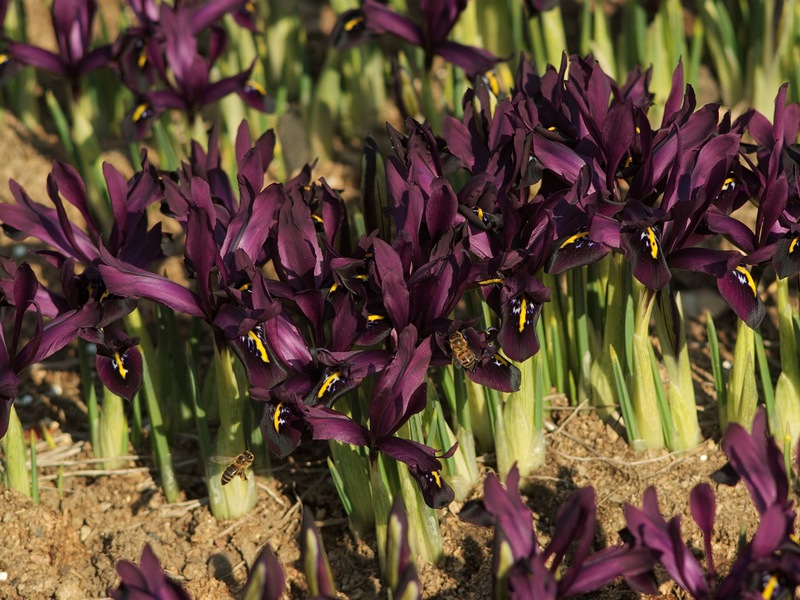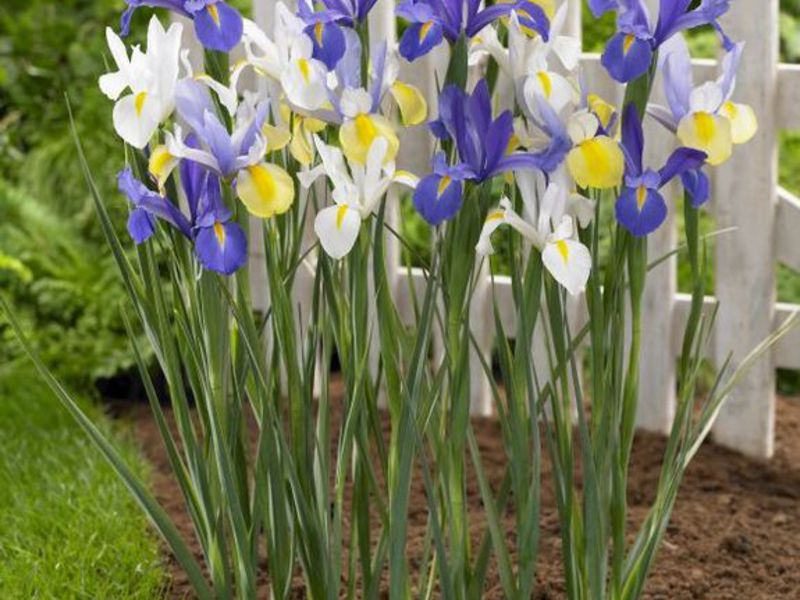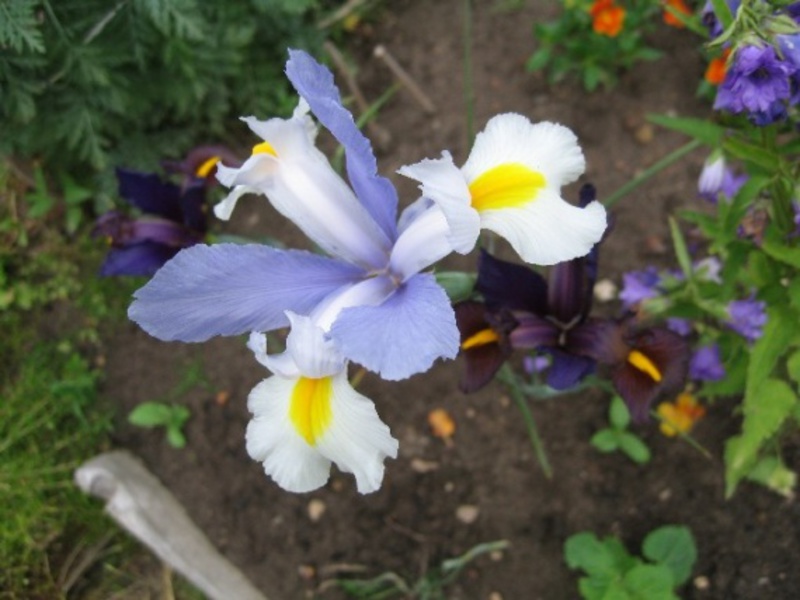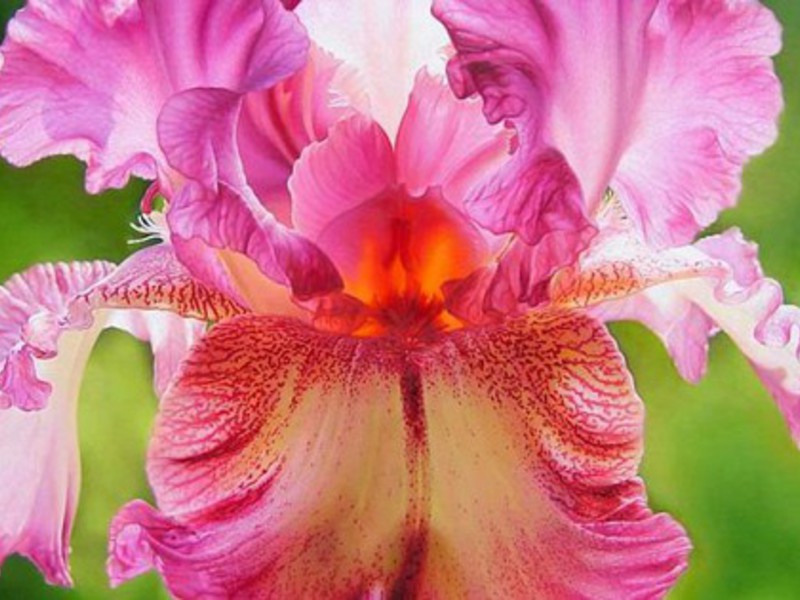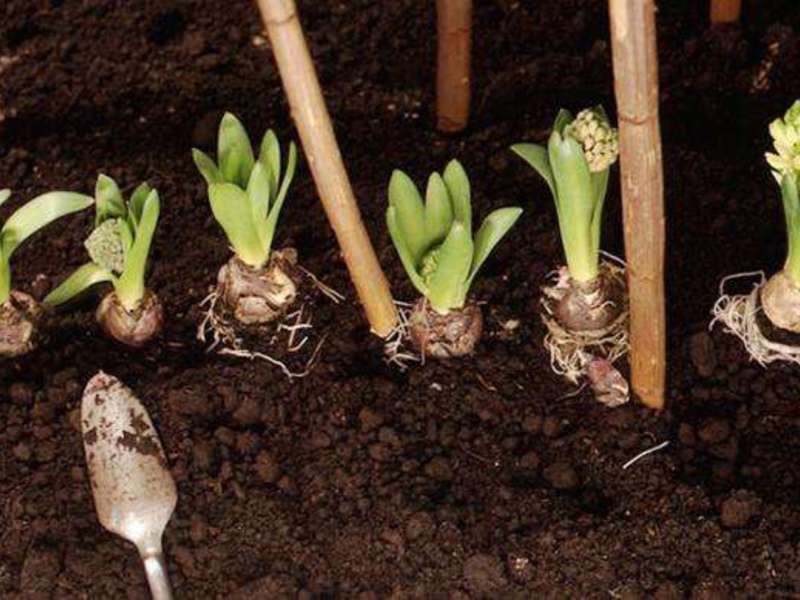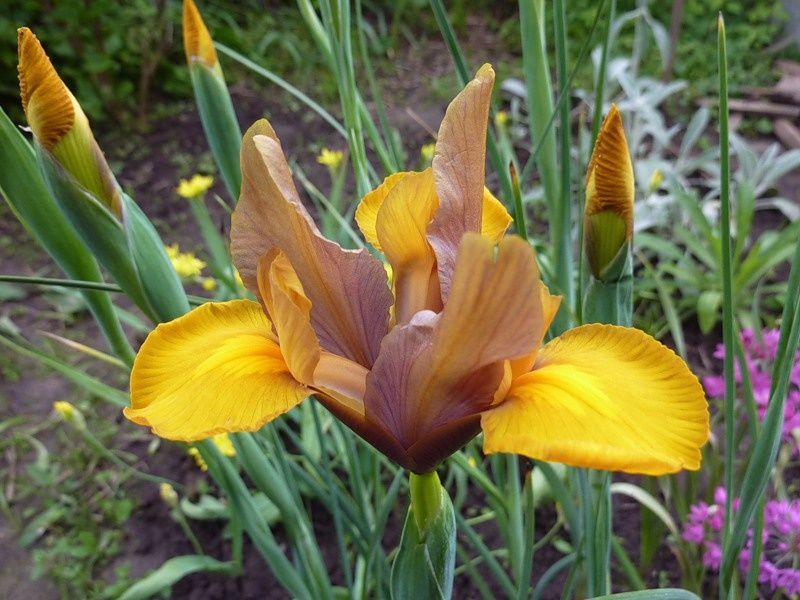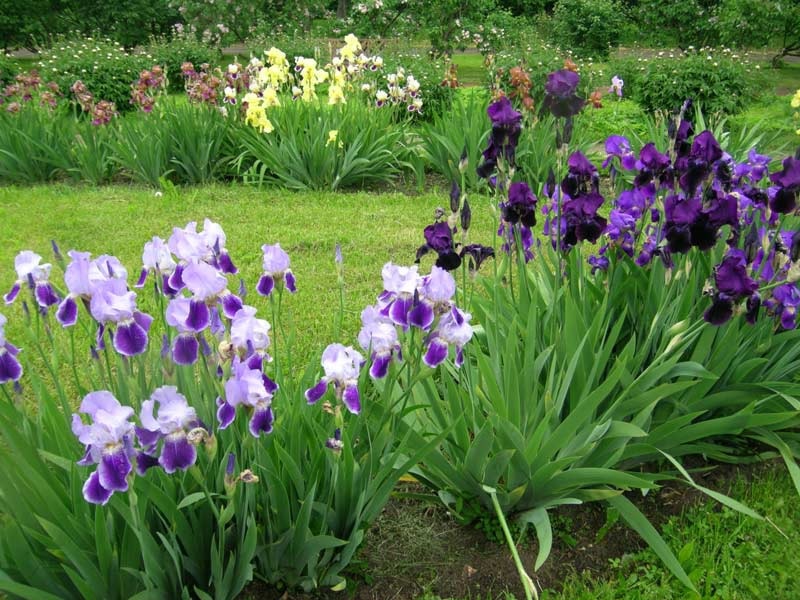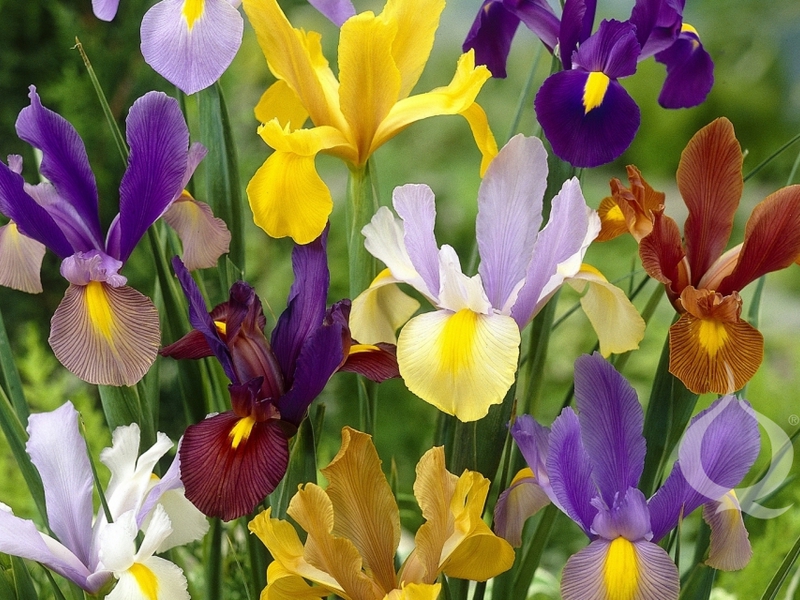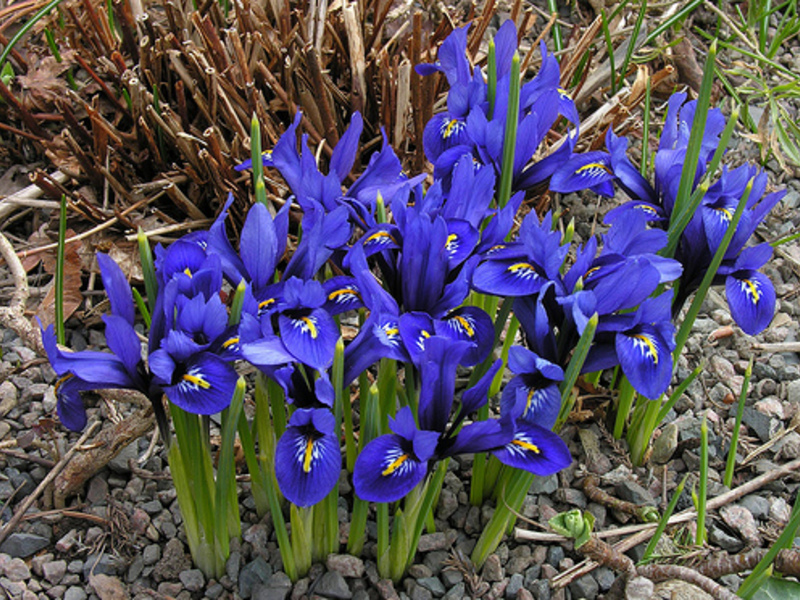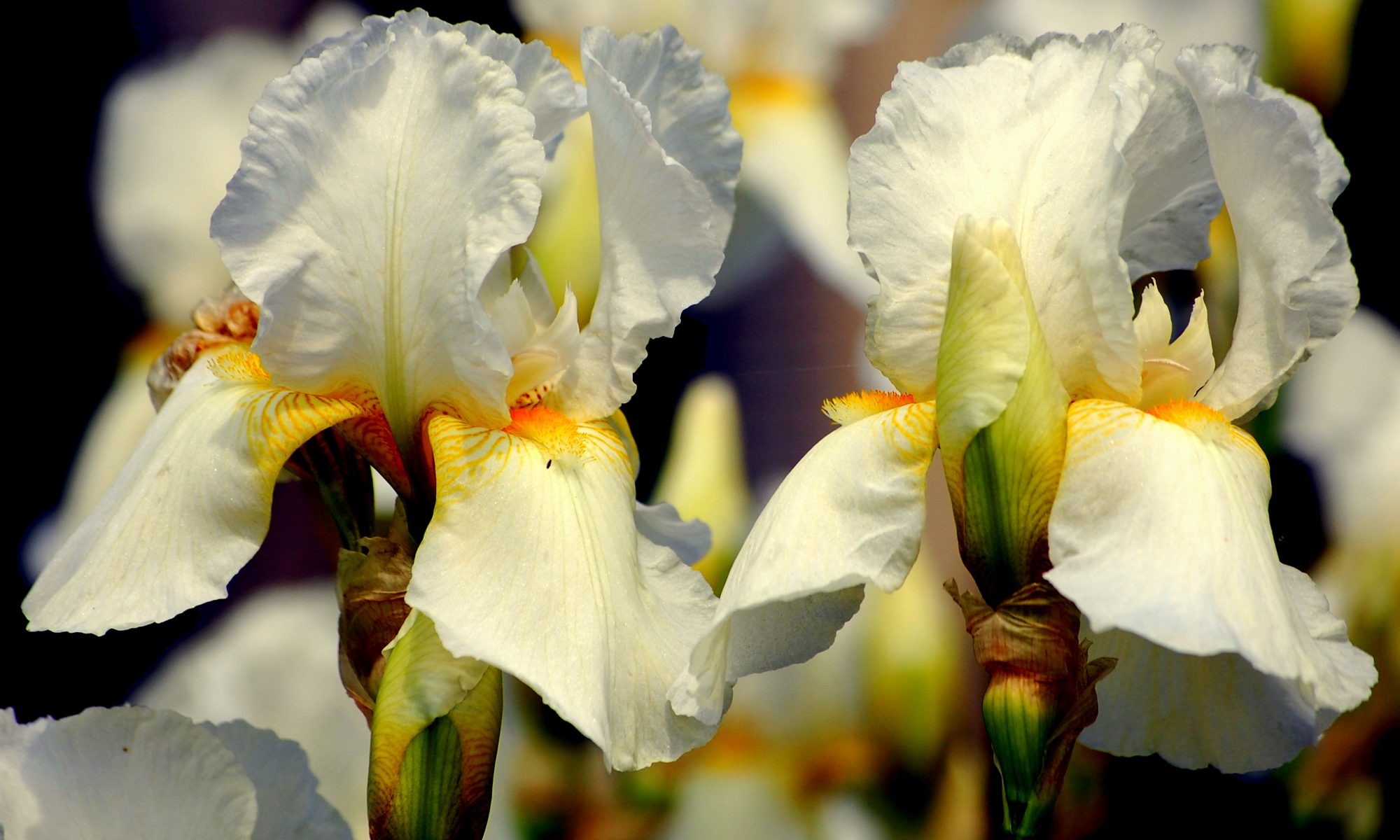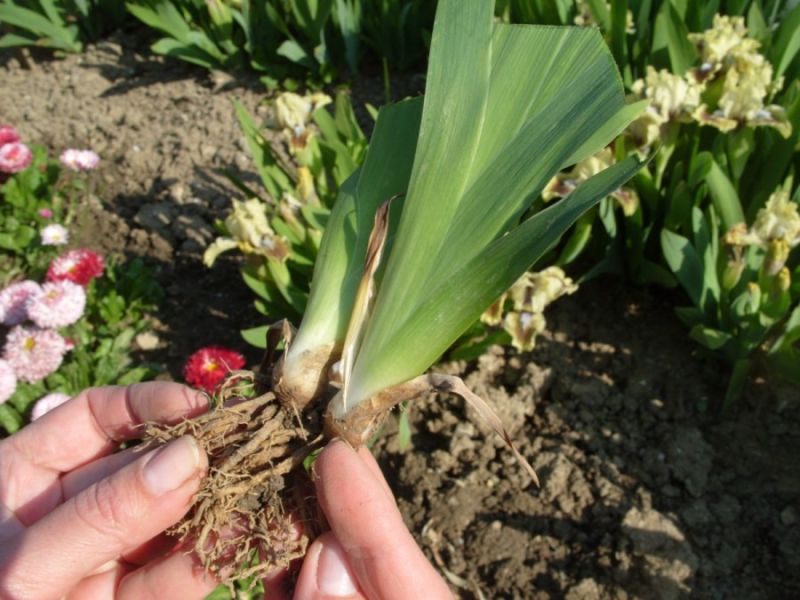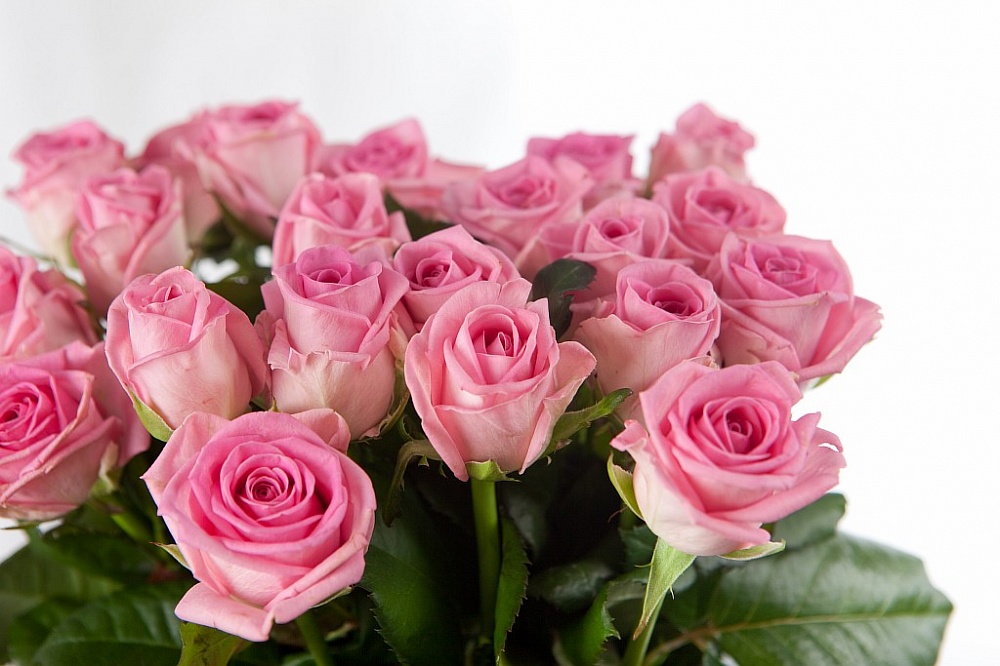For a summer resident, there is nothing more pleasant than the opportunity to enjoy the beauty of the first spring flowers. Indeed, for many, they are the harbingers of warmth, followed by summer. This is precisely one of the reasons why many gardeners grow irises on their plot.
Already in early May, at many dachas, you can see blooming irises, shimmering with all the colors of the rainbow. And this is not surprising, given the variety of species of these ornamental plants. Thanks to this, each gardener has a unique opportunity to choose flowers of any color for his flower bed, so that they harmoniously complement other plants, creating a beautiful composition. However, in order to achieve such a wonderful decorative effect, every gardener should know the peculiarities of planting and caring for bulbous irises.
Content
Soil preparation: drainage and feeding
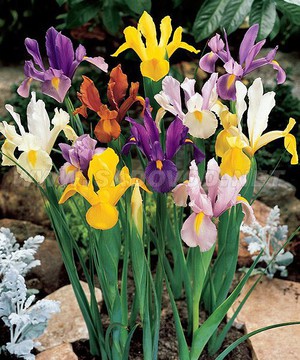 Basically irises do not create any special problems in growing, however, they still have their own preferences, which the summer resident should not forget about, who decided to acquire these flowers on his site. It will be difficult for you to grow irises under the following conditions:
Basically irises do not create any special problems in growing, however, they still have their own preferences, which the summer resident should not forget about, who decided to acquire these flowers on his site. It will be difficult for you to grow irises under the following conditions:
- waterlogged soil;
- mineral-poor soil;
- constant shadow.
So that excessive waterlogging does not cause you problems in the process of growing irises, it is recommended to place them on an artificially created slope. If in the selected area the groundwater is quite close to the surface and creates a danger for the roots, then a small elevation with a slope to the south and the manufacture of a drainage system would be a good solution. This can be done by raising the flower bed 20 cm and creating conditions for the natural drainage of rainwater.
Irises are light-loving plants, however, abundant lighting throughout the day is contraindicated for them, so it is best if they are in the shade for some time. This condition can be met if you choose a plot for the flower garden that will have partial shading. Before transplanting to the selected area of the plant, organic fertilizers must be applied to the soil, and then carefully dig up and loosen the ground. If you want to fertilize the land with manure, then you need to apply it much earlier, about a year before planting.
Bulbous plants grow best on limestone soil. You can change its reaction to the required one if fertilizers such as lime, chalk or eggshells are added during digging. When preparing sandy soil for planting irises, it is recommended to add humus to it, which is also useful to supplement with ash or 40 gr. superphosphate per 1 sq. m... On clay soils, coarse sand, as well as a small amount of humus or compost, will not be superfluous.
Blue irises can grow in one place for no more than 10 years. For hybrid varieties, the maximum growing period is 5 years.Considering that irises tend to grow rather quickly, the problem of lack of nutrients in the soil becomes urgent. This is why you have to choose new places to grow these flowers from time to time.
Autumn is the time for planting bulbs
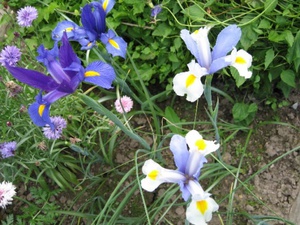 Planting agrotechnics may include certain features that may vary depending on the variety. In areas with a temperate climate, it is recommended to grow iridodictiums, Turkish and Caucasian, as well as their hybrids, which not only easily take root, but also perfectly withstand winter cold. They must be planted in a dry, open place, where they begin to prepare pits up to 7 cm deep. After transferring the bulbs to the holes, you need to make sure that the soil does not adhere tightly to them.
Planting agrotechnics may include certain features that may vary depending on the variety. In areas with a temperate climate, it is recommended to grow iridodictiums, Turkish and Caucasian, as well as their hybrids, which not only easily take root, but also perfectly withstand winter cold. They must be planted in a dry, open place, where they begin to prepare pits up to 7 cm deep. After transferring the bulbs to the holes, you need to make sure that the soil does not adhere tightly to them.
You can do it even easier if you fill them with a mixture containing a small amount of sand. Fungal diseases can seriously harm irises. Therefore, after purchasing the bulbs must be treated with insecticides: for example, "Fundazol" or "Benlate". In summer, when the stems and leaves are dry, it is necessary to separate the daughter bulbs that will be used as planting material.
Unlike other species, the Juno variety has rather large bulbs with a fleshy structure, which renew the roots every year. Therefore, when working with them, you must be very careful. Important avoid injury to the rootsotherwise it will lead to the death of the plant. It is recommended to plan a transplant of blue bulbous irises to a permanent place in the last week of September or in the first decade of October. To do this, it is necessary to transfer the bulbs as carefully as possible into the prepared pits, taking care not to damage the roots, and then sprinkle them with a layer of soil up to 6 cm thick.
In the summer, the following operations are carried out for the bulbs: when the plants show clear signs of wilting, the bulbs must be dug up and transferred to a drying room, where it is necessary to maintain a temperature of 22-25 degrees Celsius. But you can do otherwise - for this, a film is laid over the flower bed so that it does not get wet with rain, and it is left in this state until early October. Subsequently, for the cultivation of the Juno variety, daughter bulbs or seeds are used, which are sown in special boxes. Moreover, the planting material in both cases must be pre-dried. When "Juno" is propagated by seeds, the first shoots appear in the second year.
When placing future plants, you can choose different intervals: however, flowers should not be planted closer than two bulbs wide. The maximum permissible distance between adjacent plants is 0.5 meters.
Using Plastic Grow Baskets
Many supermarkets today offer baskets that are great options for growing bulbs. The main plus is that they are simply removed from the ground, therefore, together with the basket, the planted bulbs can be quickly and effortlessly transferred to the room for drying.
How to properly care for irises?
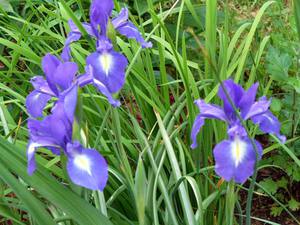 Outdoor planting and care involves more than just the right planting timing and soil preparation. Once the plants have taken root, they should be cared for during flowering. In early varieties, the first flowers form in May, and in late varieties in June. First of all, bulbous irises need feeding and protection from pests. Equally important for flowers and watering. Naturally, irises are watered less frequently during the rainy season. More active irrigation is necessary in dry years, and plants are watered in the evenings.
Outdoor planting and care involves more than just the right planting timing and soil preparation. Once the plants have taken root, they should be cared for during flowering. In early varieties, the first flowers form in May, and in late varieties in June. First of all, bulbous irises need feeding and protection from pests. Equally important for flowers and watering. Naturally, irises are watered less frequently during the rainy season. More active irrigation is necessary in dry years, and plants are watered in the evenings.
Mineral fertilization
To carry out dressings, you need to find the right time. In the spring, they do this after the snow melts and the topsoil dries out completely. For dressing, you can use ready-made solutions and dry universal mixtures, for example, "Reasil" or "Good power".To do this, you need to expand the amount of fertilizers recommended by the instructions on the upper layer of the soil, after which it must be loosened. However, care must be taken to ensure that the roots are not damaged during this operation.
As a possible feeding course for hybrid irises not in the first year of flowering, you can suggest the following schemeconsisting of three main stages:
- nitrogen, potassium, phosphorus (2: 3: 1) - in spring on dry soil;
- a similar composition, but here the ratio (3: 3: 1) is observed - at the time of bud formation;
- potassium, phosphorus (1: 1) - one month after the beginning of flowering.
If, during the care, feeding is carried out in a timely manner and in the correct doses, then in the spring the Dutch irises will demonstrate all their attractiveness, rapid growth and long flowering. The gardener should pay special attention to the moment when the flower buds form. If at this stage of the life of irises to carry out top dressing, then next year the flowers will delight the gardener with lush, full bloom.
You need to be especially careful using nitrogen... An overabundance of this element often causes "fattening" - a process in which the leaves grow vigorously, as a result of which the plant does not have the strength to bloom.
Preventive work to protect against pests
Regardless of the fact that blue bulbous irises do not grow as long as we would like, in this case it is still necessary to carry out special protective measures. Various pests will help darken the joy of blooming irises. Therefore, in order to avoid their appearance, it is necessary to carry out planned treatment of plants.
 for the first time spraying is carried out at the moment when the leaves reach a length of 10 cm. Good results in the fight against pests are shown by the preparation "Malathion", as well as universal pesticides. You can process flowers only at that moment, until the buds appear;
for the first time spraying is carried out at the moment when the leaves reach a length of 10 cm. Good results in the fight against pests are shown by the preparation "Malathion", as well as universal pesticides. You can process flowers only at that moment, until the buds appear;- not every summer resident can understand in time that bearded irises are affected by the disease. This can be determined by the appearance of flowers: a healthy plant must have a large bunch of 7-9 leaves. If irises are sick, then they will have no more than 5 leaves;
- also, not all plants can begin the process of flower bud formation on time. In this case, you will need to perform the following steps: first you need to dig a bush out of the ground, then it is cleaned of rot and insects, and finally it is treated with an antiseptic.
Conclusion
 If a gardener wants to admire the first flowers in the first weeks of spring, then he should pay attention to such a plant as bulbous irises. Having planted them on the site, the summer resident may be one of the first to know that the long-awaited warmth will come very soon. However, he will be able to enjoy the beauty of bulbous irises only if he takes care of these flowers throughout the season. And for this you will have to solve many questions.
If a gardener wants to admire the first flowers in the first weeks of spring, then he should pay attention to such a plant as bulbous irises. Having planted them on the site, the summer resident may be one of the first to know that the long-awaited warmth will come very soon. However, he will be able to enjoy the beauty of bulbous irises only if he takes care of these flowers throughout the season. And for this you will have to solve many questions.
In addition to choosing a suitable site for planting irises, it is necessary fertilize the soil regularly, since it largely depends on them how abundant and long the flowering of these plants will be. Protection from pests is also an important measure, because these delicate flowers can become easy prey for many pests, including thrips.
